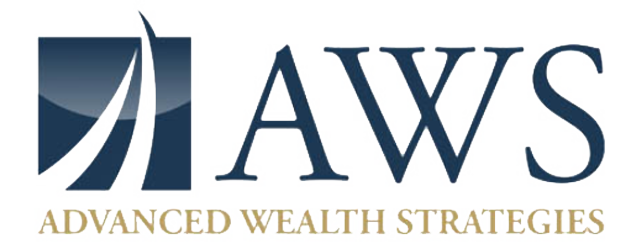
AT AWS, WE PARTNER WITH OUR CLIENTS TO PROVIDE FULLY COMPREHENSIVE, CLIENT-CENTRIC INVESTMENT PLANNING AND IMPLEMENTATION TO HELP THOUGHTFUL INVESTORS LIVE FOR TODAY WHILE BUILDING FOR TOMORROW.
RETIREMENT PLANNING
Retirement income plans are not just for the wealthy. As you near retirement, the traditional strategy has been to move growth-seeking products to more conservative fixed-income products. This may have worked fine back when retirement was only expected to last five to ten years. These days, however, people are living longer. It’s not unusual for someone retiring at age 65 to live to age 90 or longer. Consider that you may need to plan for your nest egg to last potentially 25 to 30 years.
WEALTH
ACCUMULATION
Time doesn’t stand still, and neither does money. That’s why you can use time to your advantage when investing for wealth accumulation. The longer you invest, the more time your money must compound interest. If your portfolio has not fully recovered from losses in recent years, you may wish to consider a more aggressive allocation to make up for lost ground and get back on track to accumulating wealth.
However, given recent lessons learned in stock market investing, it is important to remember that more conservative retirement plans typically have only a portion of the assets invested in the stock market. Other allocations should be set aside for more conservative investments and/or secured income contracts. After all, the last thing you want to do is lose wealth during the next market correction.
TAX
PLANNING
In the U.S., we have entered an environment of rising taxes. That’s why it’s important now, more than ever before, to incorporate tax planning into your portfolio and all of your financial decisions.
Investing in a tax-deferred vehicle means your money will compound interest for years, unfettered by income taxes, allowing it to earn interest at a faster rate. While very few investments avoid taxes altogether, many allow you to defer paying them until retirement – when you may be in a lower tax bracket.
ASSET
PROTECTION
In recent years, we’ve seen that aggressive and conservative products, both domestic and global, can move in tandem with one another. In other words, we have experienced market scenarios in which there is very little safety anywhere—even for diversified portfolios.
Twenty-first century asset protection calls for more than just strategic asset allocation. Product allocation—buying instruments that can protect your portfolio from negative returns early in retirement—is generally considered a more effective means of protecting assets.
Diversifying your retirement assets among a variety of vehicles—both insurance and investment oriented, depending on what is appropriate for your situation—may offer you the best chance of meeting your retirement income goals throughout your lifespan.
ASSET-BASED
LONG-TERM CARE
Solely focusing on the growth of your portfolio is only solving half the retirement equation. The costs associated with a chronic illness or disability poses the biggest liability to every retiree in the U.S. and can be devastating to one's financial plan. However, traditional insurance options have discernible drawbacks, mainly in the form of expensive lifelong premiums and no guarantee that you or your family will ever use the benefits. In response, most people decide to "self-insure", leaving all their assets susceptible to the costs of a long-term care scenario. We can show you how to more effectively leverage this "self-insuring" technique and how you or your family can utilize a long-term care policy without ever having to pay a single premium.
ESTATE
PLANNING
Estate planning is simply determining (while you’re still alive) where your assets should go after you die. Without a properly structured estate plan, your wishes may not be fulfilled, and your loved ones could be hurt both emotionally and financially.
While the concept is simple, the vehicles, planning, and implementation process can be rather complex. Because of the constantly changing estate tax laws and emerging vehicles to help you protect and transfer your assets effectively, it’s important to work with experienced estate planning professionals who stay current in this field and advise clients on a day-to-day basis.
1031
EXCHANGES
The IRS allows individuals to bypass the capital gains tax on the sale of real estate if they invest the proceeds into a "like kind" investment, effectively creating a exit strategy for assets that are highly appreciated. However, pulling this off is no easy feat and requires a considerable amount of timing and knowledge. Affluent families have been using this tactic for decades to avoid capital gains and minimize the tax impact of their real estate holdings to their heirs. We can show you how to take advantage of this rule and provide turnkey 1031 exchange solutions that take away the complexity typically associated with this type of transaction
IRA LEGACY
PLANNING
IRA accounts have become one of the largest types of assets inherited by beneficiaries. If you don’t anticipate needing your IRA money in retirement, you may wish to consider a legacy planning strategy to reduce taxes and increase the payout your beneficiaries will inherit upon your death.
A properly structured IRA may provide your beneficiaries a regular stream of income while leaving the balance of IRA assets invested for tax-deferred growth. The result may yield substantially more money paid out over the course of your beneficiary’s lifetime. We can help you evaluate your financial scenario to determine if IRA legacy planning may be the best means for ensuring a long-lasting inheritance for your heirs.
TRUSTS
There are many different types of trusts, and they can be complex to set up and execute. However, a trust can be a very flexible and advantageous means to transfer your assets in the future. Some trusts also provide current benefits, such as tax deferral and/or deductions.
LIFE
INSURANCE
Life insurance isn't for those who have died—it's for those who are left behind. When shopping for life insurance, consider needs such as replacing income so your family can maintain its standard of living, as well as paying for your funeral and estate costs. As a rule of thumb, you should seek coverage between five and seven times your gross annual income. As far as the various types of policies go, they can generally be placed into one of two categories: Term and Permanent.
Term insurance generally provides coverage for a specified period and pays out a specified amount of coverage to your beneficiary only if you die within that time period. You pay the same amount of premium from the first day of the policy until the term ends. Permanent insurance, on the other hand, does not need to be renewed. A permanent insurance policy will stay permanently in effect for the rest of your life so long as premiums continue to be paid. Permanent policies can also build cash value as tool for tax-advantaged income in retirement.
INCOME
PLANNING
Thanks to new prescription drugs and medical technology, people are living longer than ever before. However, one drawback to a longer life is the greater possibility of outliving your savings – creating even more reason to develop a retirement income plan designed to last a longer lifetime.
A significant investment loss in the years just prior to and/or just after you retire can have a devastating impact on the level of income you receive over the course of your life. In fact, the earlier a loss occurs, the greater the chance of depleting your retirement savings.
We can help you design an income plan incorporating insurance and investment vehicles to create opportunities for long-term growth as well as guarantee income throughout your retirement.
IRA & 401(K)
ROLLOVERS
When you change jobs or retire, there are four things you can do with the money in your employer-sponsored retirement plan:
Leave the money where it is
Take the cash (and pay income taxes and perhaps a 10% federal penalty tax if you are younger than age 59½)
Transfer the money to another employer plan (if plan allows)
Roll the money over to an IRA
